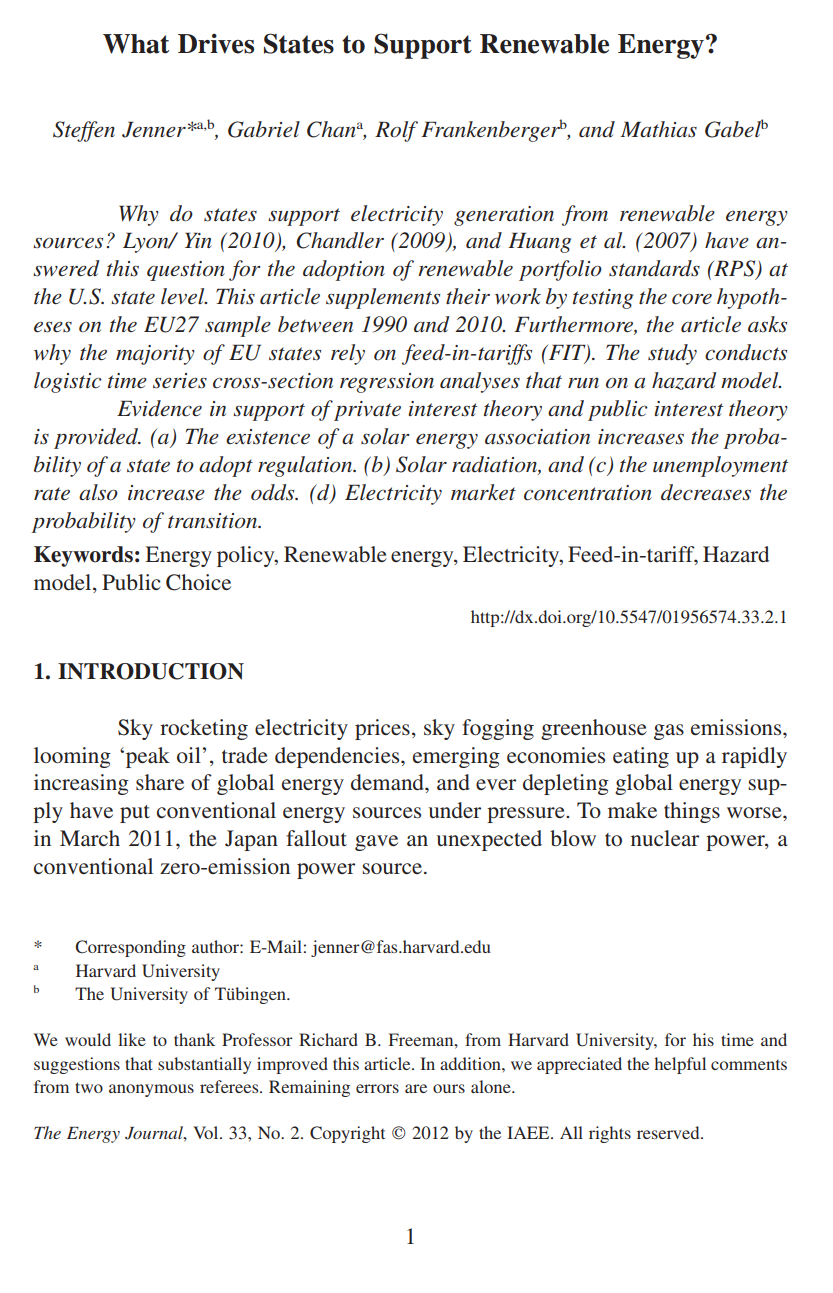What Drives States to Support Renewable Energy?
Recommended Citation:
Jenner, Steffen, Gabriel Chan, Rolf Frankenberger, and Mathias Gabel (2012). What Drives States to Support Renewable Energy? Energy Journal 33(2): 1-12. doi: 10.5547/01956574.33.2.1.
Abstract
Why do states support electricity generation from renewable energy sources? Lyon/Yin (2010), Chandler (2009), and Huang et al. (2007) have answered this question for the adoption of renewable portfolio standards (RPS) at the U.S. state level. This article supplements their work by testing the core hypotheses on the EU27 sample between 1990 and 2010. Furthermore, the article asks why the majority of EU states rely on feed-in-tariffs (FIT). The study conducts logistic time series cross-section regression analyses that run on a hazard model. Evidence in support of private interest theory and public interest theory is provided. (a) The existence of a solar energy association increases the probability of a state to adopt regulation. (b) Solar radiation, and (c) the unemployment rate also increase the odds. (d) Electricity market concentration decreases the probability of transition.
Keywords
energy policy, renewable energy, electricity, feed-in-tariff, hazard model, public choice

